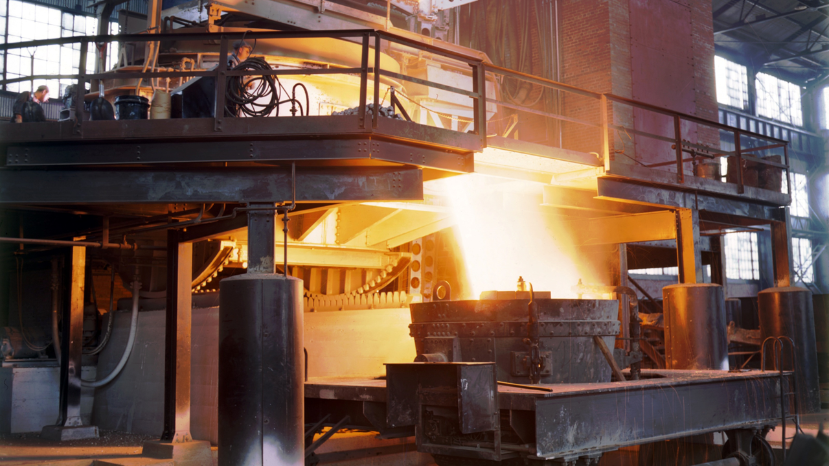“It is with our passions as it is with fire and water; they are good servants but bad masters.” — Aesop
A common trope of Hazard Communication training is for the instructor to share an SDS of “dihydrogen oxide” with the class and to review all the dangers of this “hazardous chemical”. Then, in a twist at the end, the instructor reveals that “dihydrogen oxide” is just water. Everyone laughs and the explicit message is that anything can be hazardous. The implicit message, however, is that Safety Data Sheets are overwrought, and don’t really need to be taken seriously.
While it is essential to life, water can be fatal. Beyond the obvious danger of drowning and the less obvious danger of water poisoning (hyponatremia, where drinking excessive amounts of water causes sodium levels to drop below 135 mmol/L), water also poses some process hazards that we should all be aware of.
A Recent Explosion in Ohio
There was recently an explosion and fire at Timken Steel’s Faircrest Plant in Perry Township, Ohio. Three workers were injured severely enough to be taken to the hospital. Two were treated and released, but the third was hospitalized with burns over 75% of his body.
The explosion and fire involved a furnace. Initial speculation centered around fuel leaks or accumulated dust. That speculation was quickly shifted to a water leak in an electric arc furnace. From what has been reported publicly, we still don’t know what caused this explosion, but EAF explosions are a recognized hazard in the steel industry. An article in the technical journal, Iron and Steel Technology, describes the hazard and includes a partial list of incidents in the 21st century, most of which were fatal. To increase productivity, the shells and roofs of EAFs are cooled with high pressure water. A leak in the cooling panels introduces high volumes of water into the bath of molten steel. Typically, the water just boils off with no explosion. However, if the bath sloshes, as when it is tilted for pours, and the molten steel can envelop the water and the flashing is sudden and catastrophic—an explosion.
A Process Incident
The recent incident in Ohio reminded me of an incident many years ago at a plant where I worked. The plant featured batch distillation as one of the key unit operations in its processes. For many products, the distillation included a step at the end where the still bottoms transferred to a jacketed receiving vessel to cool. After cooling enough, the process cut the still bottoms with water, so the still bottom wouldn’t solidify or become too viscous to pump at ambient temperatures.
The water line was equipped with a high-temperature interlock to prevent transferring water into the vessel if the contents were too hot.
One day, due to some confusion at shift change, the operator charged the water into the receiving vessel first. The water went in easily because the empty vessel wasn’t too hot to accept it. Then he discovered that the hot still bottoms were still in the distillation column, so he transferred them to receiving tank. The hot liquid hit the cold water, which immediately flashed. The vessel rumbled and shook, the rupture disk blew, and a huge cloud of steam shot into the air, raining hot still bottoms over the production area.
Fortunately, it was a near miss. No one was hurt and no equipment was damaged, although the rupture disk needed to be replaced and there was an extended clean-up. As one engineer put it to me at the time, “that’s a [heck] of way to test the pressure relief system.”
Other Hazards of Water
There are other hazards associated with water as well. Steam systems present hazards because of the potential for thermal exposure and exposure to high pressure jets. One plant I worked at had a spot where they collected stubs of broom handles. They explained that they walked around certain high pressure steam lines (> 2,000 psig) when they suspected a leak. They couldn’t hear the steam leak because of the noise in the area, nor could they see the jet because the vapor didn’t condense the way low-pressure steam leaks do. So, they would wave a broom in front of them. A steam jet at that pressure would slice off a piece of the broom handle.
High pressure steam is not the only high-pressure hazard of water. Protesters that have been hit with water cannons can attest to that. High-pressure water lines can also exist in process settings.
Another obvious hazard of water is water reactive chemicals. This includes alkali metals, which react with water to form their hydroxides, hydrogen gas, and heat, which can then ignite the hydrogen gas. It also includes certain amides, carbides, and hydrides. Fortunately, water reactive chemicals are typically marked, and the necessary precautions well understood by users and producers of those chemicals. Nonetheless, the classic fire-fighting tactic of putting a lot of water on a fire is counterproductive with water reactive chemicals.
Just Water?
The hazards that cause us the most harm are those that we are unaware of and those that we have become complacent about. Lao Tzu said, “Nothing is softer or more flexible than water, yet nothing can resist it.” Water may be the safest material we deal with in the chemical process industries, except perhaps for air, yet it is not without a range of hazardous properties that can imperil life and property. So, stay vigilant. Don’t dismiss H2O as a potential hazard because it’s “Just Water.”
